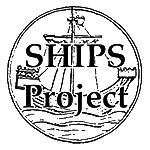'Iron Coffins'
Published in 1969 by Holt, Rinehart and Winston
Herbert A. Werner was a former U-boat commander who fought for four years (1941-1945) as an officer of five German U-boats. His book, Iron Coffins, is a personal account of the German U-boat battles of World War II from the triumphant years of 1941-42 through to the final years of dispair in 1944-45.
Chaper 27 of the book describes how the submarine U-953, commanded by Werner, had left Bergen on 17th February 1945 after repairs. Forced underwater by a surface attack the submarine's bow accidentally hit the seabed through the actions of an incompetent officer, but thinking they were undamaged they carried on with their patrol. Orders from headquarters had been received which stated:
U-953 OPERATE IN PLYMOUTH BAY FROM LIZARD HEAD TO START POINT. TRAVEL ALONG TWO HUNDRED METER LINE. INFORMATION RE NEW MINEFIELDS FOLLOW.
This came as a surprise to Werner as U-boat activity has been stopped in the English Channel in October of 1944 because the U-boat losses outweighed the number of ships sunk. It was known that the defences were strong in this area and the number of U-boats sunk there were a testament to this, but the orders were still followed by captain and crew. Werner took his boat along the western edge of the huge minefields south of the Hebrides, avoided the destroyers near the North Channel, then passing Ireland to the west. During the journey, U-480 was sunk near Land's End and U-927 was bombed by aircraft at the Eddystone Rocks, the thirteenth U-boat to be sunk in February 1945.
U-953 left the southernmost tip of Ireland near Fastnet Rock Lighthouse to cross over into the English Channel. Listening to allied broadcasts the crew were well aware of the situation in mainland Europe with the advance of the allies into Germany. They passed Lizard head and saw three destroyers off Falmouth which they managed to evade. The submarine patrolled the designated area between Eddystone and Plymouth sometimes coming into water so shallow that there was only five metres of water above the submarine and only two beneath the keel. Air and surface attacks kept the boat submerged for long periods preventing the charging of her batteries. On March 19th she was found by three destroyers lying aground in only 38m water depth and was attacked with depth charges. The attack was preceded by some strange noises outside the hull that Werner attributed to a new kind of sonar search device. The first attack was followed by a second and third which was further away, losing contact with the U-boat the attacks continued at a distance for over three hours.
On the morning of March 20th (the JEL was sunk by U-399 on 21st March) the submarine spotted several mastheads to the east which were growing bigger as time went by, this was a convoy of seven cargo ships with two destroyers in the lead and two behind, heading down channel towards the Lizard. They decided to attack the starboard side of the convoy at a distance of two thousand yards but found that the outer tube doors would not fully open and remained in a half-open position. This left the submarine unable to fire torpedoes but also left it vulnerable to depth charge attack as only the weaker inner doors of the torpedo tubes were holding back the sea. With no ability to attack and a poor chance of survival, Werner decided to make the long and difficult passage back to Norway for repairs through the Irish Sea and around the Hebrides.
Werner's last comment sums up the feeling on the boat: 'We had nothing to show for our long and agonizing voyage—nothing at all except our lives.'
![]() If you can provide more information about this then please contact us
If you can provide more information about this then please contact us


